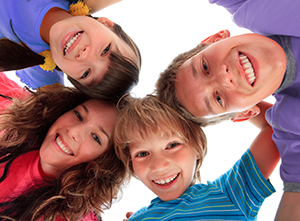Understanding behaviour
A child's behaviour is always contextualised by their understanding of their environment and the people in it.
Each of their actions meets with a response from the adult which steers their next action. These interractions create a narrative for which both are equally responsible.
Those practicing the Good Relationships Method will be able to organise the chaotic and unhappy narrative of the child into feelings, needs, and requests, and act accordingly.
Intervening restoratively in the narrative leads to a 'happier ending' for the current narrative and makes follow-up easier.
Some basic principles of Good Relationships work
- Behaviour is a form of communication
- Social skills and competencies are learned
- Some competencies depend on 'executive function' - the ability to manage feelings, understand social cues, and dialogue effectively.>
- Children may temporarily lose some executive competencies when stressed.
Readiness for learning
Inevitably, some children experience adverse life events such as bereavement, chronic poverty, sibling- or parent-care responsibilities, family breakdown and dysfunction, homelessness, and other disturbing crises. Many children arrive at school underfed, over-tired, stressed, or anxious. These issues are often chronic.
Learning is a 'self-actualizing' activity, as described by Maslow’s hierarchy of needs. Children are motivated to learn when their basic needs for nourishment, emotional security, and acceptance have been met. A child’s basic needs may be overwhelming, making them unready to attend and learn.
Most of the time, problematic behaviour is more usefully viewed as a communication of feelings and needs.
- We respond to the communication rather than the behaviour itself.
- We teach children to verbally articulate feelings and needs.
- We seek to make agreements and teach students the importance of doing so.
When there are persistent problems the most effective way to respond is to identify where the gaps in the conduct curriculum are and work accordingly.
A progress model for Social, Emotional and Mental Health Development
The ‘conduct curriculum’ describes the social, communications, personal development, and relationship competencies which children develop during their school-life. When there are conduct issues, it is because the child has not yet learned, or cannot access, these competencies at that time. We use the conduct curriculum to assess needs and select development objectives which will help them participate positively in school-life and learning.
As an idea, the conduct curriculum is easy to grasp. It is harder to set it out as a complete integrated 'system'. The conduct curriculum overlaps the Personal Social and Health Education and the Spiritual Moral, Social and Cultural curriculums (including British Values). But the conduct curriculum focuses more on the child’s adaptive skills and competencies.
There are many frameworks for this such as the Boxall Profile, the Vineland Adaptive Behaviour Scales, and the 7-factor relationship model.
But most of the time if we are thinking about the child appreciatively, engaging with them in authentic dialogue and have developed a strong relationship of trust with them, we will be able to identify through a restorative process the social and personal learning needs of the child, in terms which they and their families can understand and engage with.
